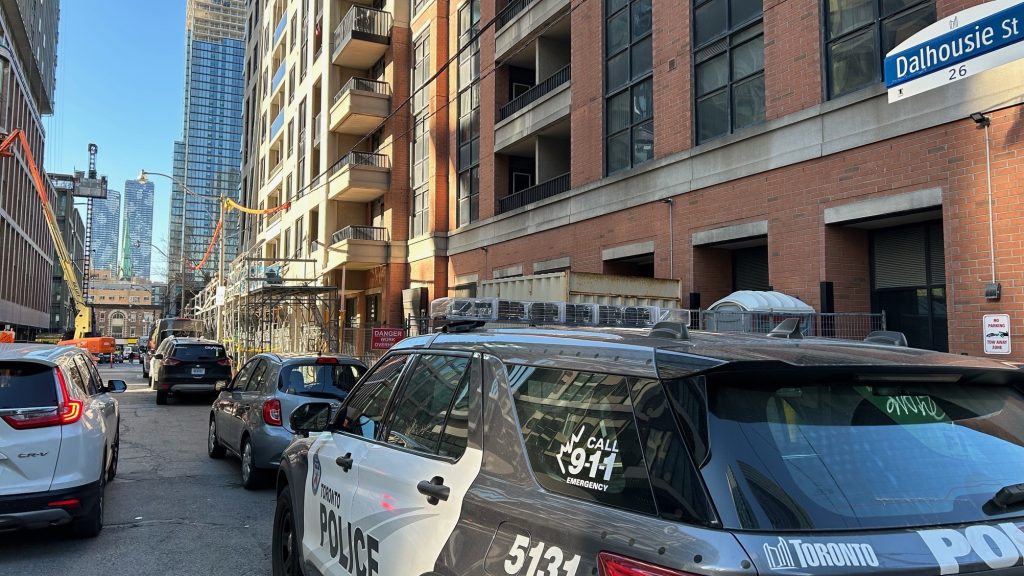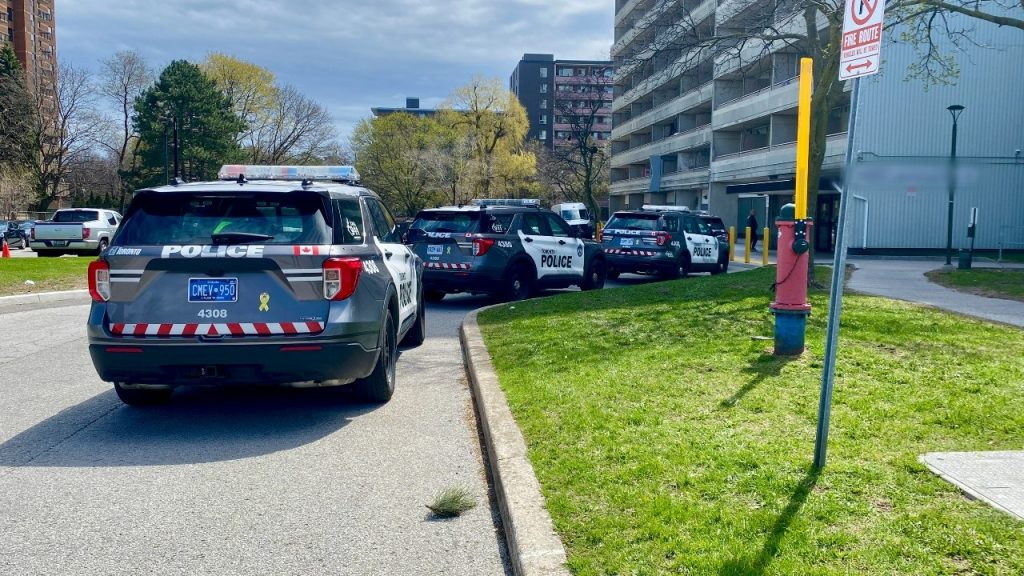Google Doodle celebrates inventor of bumpy paving blocks; do they work in Toronto?
Posted March 18, 2019 6:37 pm.
Last Updated March 18, 2019 10:18 pm.
This article is more than 5 years old.
They’re on subway platforms, intersections and literally underfoot across the city, but most people rarely take note of the bumpy yellow or cast iron tiles that mark the edges of those surfaces.
What many of us may take for granted is a vital tool for the visually impaired and March 18’s Google Doodle pays tribute to Seiichi Miyake — the inventor of the now commonplace “bumpy tiles” known as tactile paving.
Miyake invented the tactile tiles – originally called Tenji blocks – in 1965 to help a friend who was losing his vision. The bumps or bars on the tiles can be detected by visually impaired persons using a cane, through their shoes or with the help of guide dogs.
The bumpy surfaces are meant to warn the visually impaired when they are approaching danger. The barred blocks are meant to provide directional cues, letting users know that they are following a safe path.

The first tactile blocks were installed near the Okayama School for the Blind in Okayama City, Japan on March 18, 1967 and since then they have been adopted around the world.
In the City of Toronto, tactile paving was first tested out in a pilot program that ran for eight months between November 2012 and July 2013. It was based on guidelines in the Ontarians with Disabilities Act, 2005 that laid out new standards for the design of public spaces as of December 2012.
As per the City of Toronto’s website:
“New or redeveloped pedestrian crossings with curb ramps or depressed curbs must have tactile walking surface indicators with “raised tactile profiles” that have a high tonal contrast to the adjacent surface.”
For the pilot project, tactile paving blocks made of different materials were installed at the four corners of the intersection of Shuter Street and Victoria Street, by St. Michael’s Hospital. They were tested for durability, cost, maintenance, and how much the bumpy surface would wear down over time.
At the end of 2013, it was recommended that Toronto use cast iron for it’s tactile walking surfaces. Tactile paving has been included in the city’s capital projects since 2014.
However, while tactile indicators are helpful and important at the edge of subway platforms, David Lepofsky, chair of the Accessibility for Ontarians with Disabilities Act Alliance says they are not as helpful as they could be at intersections because of another problem that needs to be addressed.
“One huge problem…is that the corners are rounded – what they often have is a big sweeping curve,” Lepofsky tells CityNews. “When I’m going to cross the street as a blind person – I go to the edge where I’m going to cross and I square off, with my heels lined up, so I know that I’m at a right-angle to the street and I’m not going to walk diagonal into the middle of the intersection. That requires a right-angle intersection.”
Lepofsky says when the intersections are rounded, a visually impaired person cannot clearly determine where the edge is located.
“I cant square off against it and the tactile warnings don’t help here,” he says.
In addition Lepofsky says some stations along the new UP Express line do not have the tiles along the entire length of the platform.
“They have tactile walking surface indicators on some parts of the edge of the platform, but not on other parts,” he says. “So depending on where you are on the platform, you have the warning or you don’t have the warning and that’s scary.”
Provincial regulations that came into effect in 2013 require new constructions, built from 2016 onward, to include tactile walking surfaces.
“This is new construction they’ve [botched],” he says.










